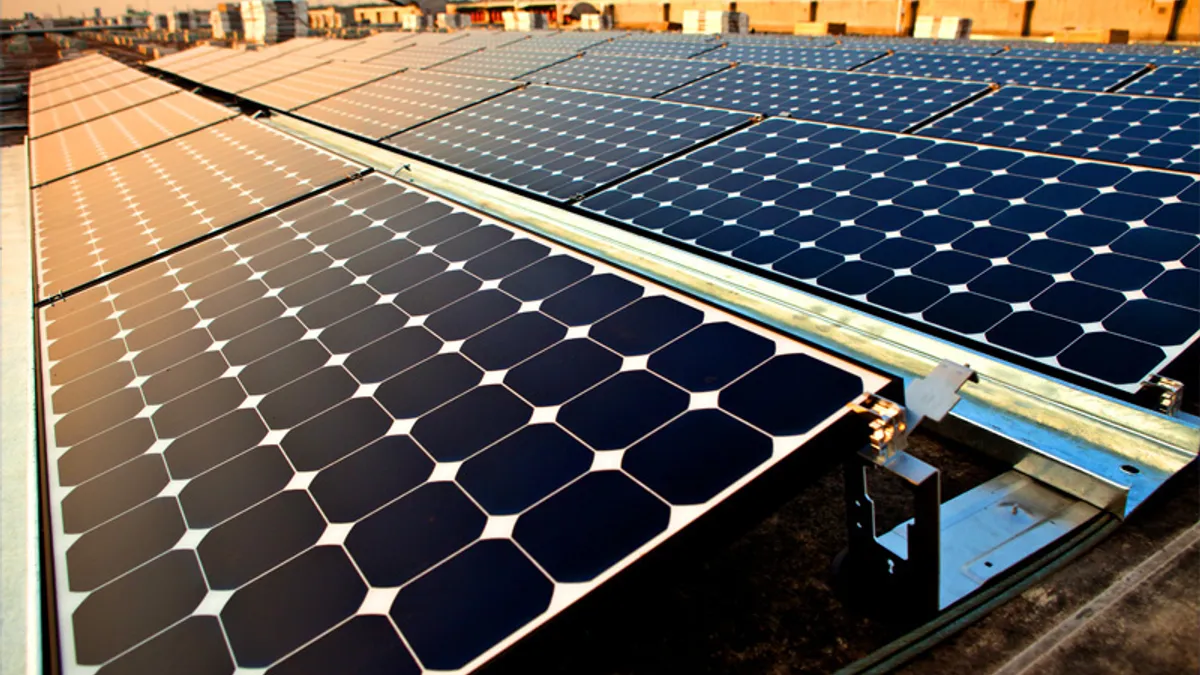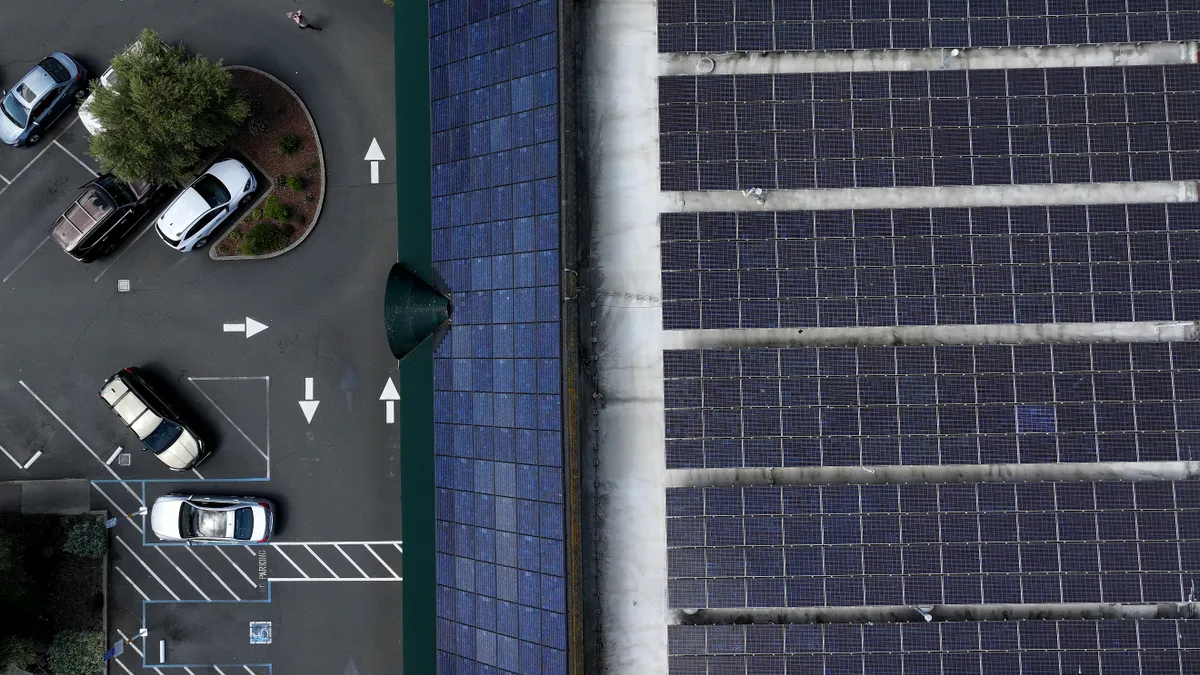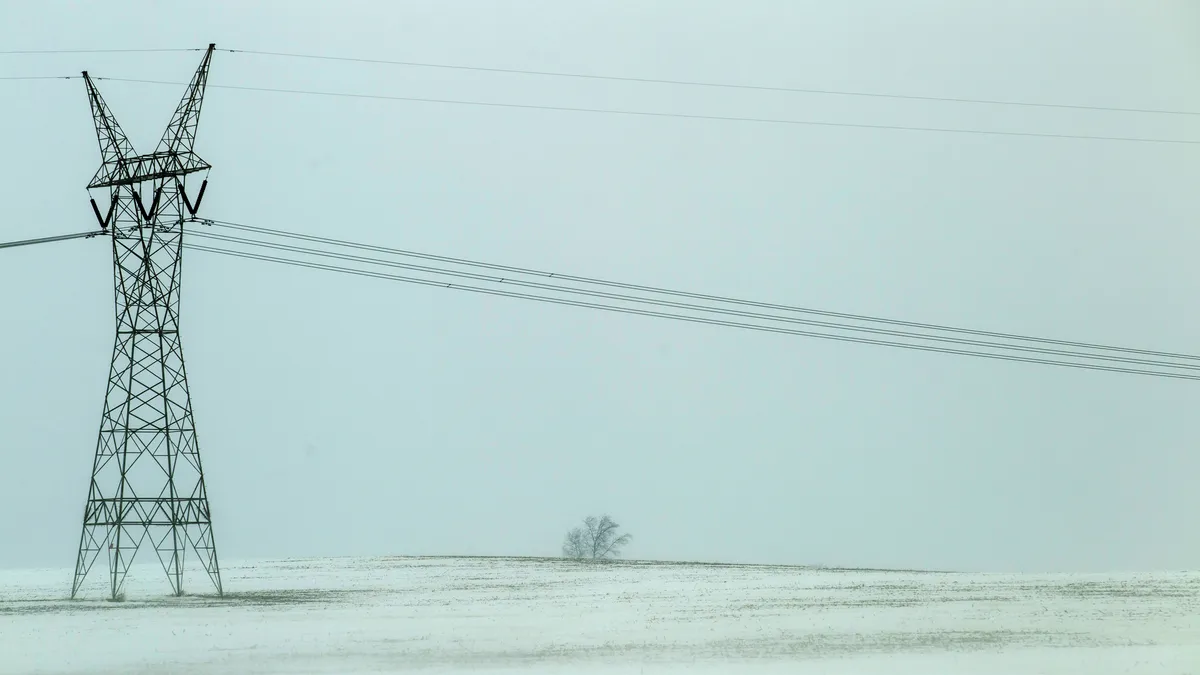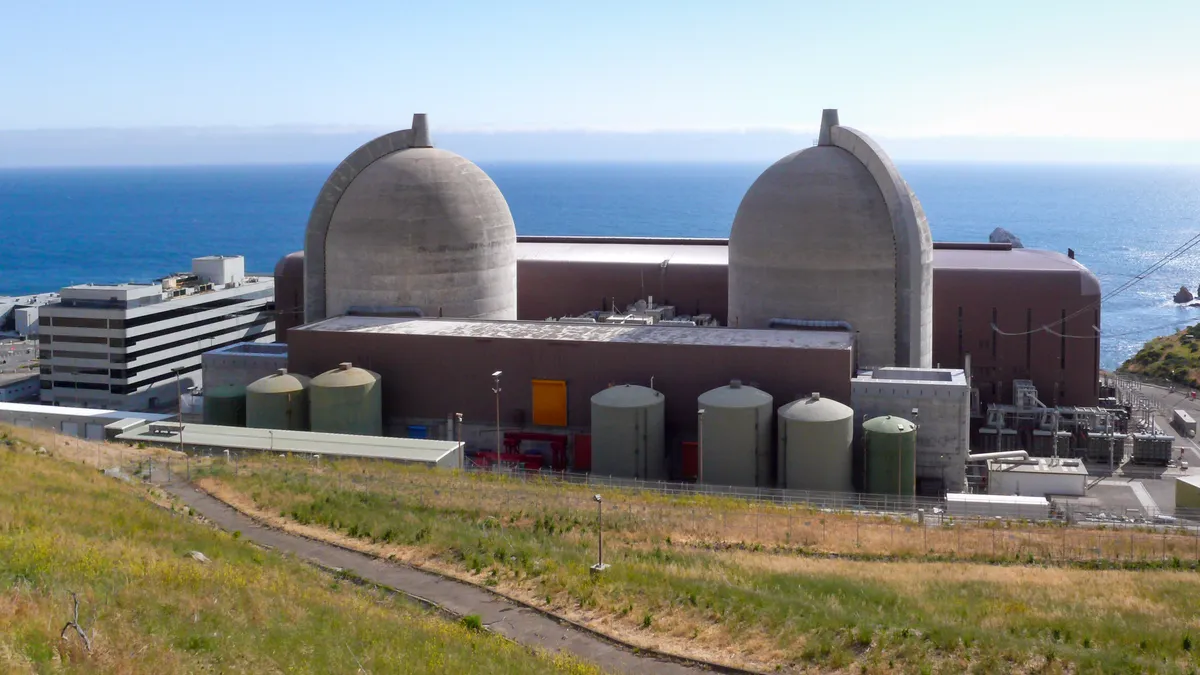2015 could be community solar’s year. Utilities and private sector players are immersed in plans. Regulators from California to the District of Columbia are working on program designs.
“The biggest trend for solar at utilities is community solar,” said Solar Electric Power Association (SEPA) Senior Research Manager Becky Campbell, co-author of the report "Expanding Solar Access Through Utility-led Community Solar."
“It seems to be resonating at every utility I talk to,” she said.
“We have seen a massive shift,” concurred Clean Energy Collective (CEC) Chief Management Officer Bart Rupert. “Eighteen months ago, most of the utilities we reached out to weren’t even aware of what community solar was. Today, most utilities are starting to see the best way to deploy solar in their territory is through community solar.”
CEC is the leading private sector community solar developer. It has developed 37 megawatts of capacity in 51 projects involving 19 separate utilities across 8 states, using a business model based on an up-front payment for panels from subscribers. It just won what appears to be major backing from First Solar, one of the world’s biggest solar developers.
SunShare is coming on strong, having just moved into Minnesota, its second state, and partnered with Mortenson Construction, one of the biggest U.S. renewables engineering, procurement, and construction (EPC) contractors. Instead of an upfront payment from subscribers, its business model is based on a contracted amount of electricity at a per kilowatt-hour rate.
“CEC understands the needs and constraints of the utility business model,” Rupert said. “Utilities see self-generation running rampant in their territories and they don’t yet know how to incorporate solar. They are asking themselves how they can stay relevant.”
In Colorado, SunShare Founder, President and CEO David Amster-Olszewski said utilities were somewhat overwhelmed with how different the concept was but reconciled themselves to the changes when they realized it was a way to offer solar without losing their customers.
“Duke Energy sees community solar as an opportunity to bring renewable energy to customers who may not have direct access to solar power,” spokesperson Randy Wheeless reported. “We are actively looking at ways to incorporate it into our system.”
Community solar defined
Community solar is a shared renewables program which allows “multiple customers to share the economic benefits from one renewable energy system via their individual utility bills,” according to "Model Rules for Shared Renewable Energy Programs," a report from the Interstate Renewable Energy Council (IREC) and the Vote Solar Initiative.
Community solar is “a program through which individual members of a community have the opportunity to ‘buy in’ to a nearby solar installation…[and] receive a proportional share of the financial or energy output of the system,” according to SEPA. “Community solar programs may be offered by electric utilities or through third-parties or community groups.”
“Only 22% to 27% of residential rooftop area is suitable for hosting an on-site photovoltaic (PV) system,” according to the 2010 Guide to Community Shared Solar from the National Renewable Energy Laboratory (NREL). “Community solar options expand access to solar power for renters, those with shaded roofs, and those who choose not to install a residential system on their home for financial or other reasons.”
Community solar in action
Among the at least 58 programs counted by SEPA in 22 states, Campbell said, the business model based on a contracted per kilowatt-hour rate and more affordable upfront costs seems to be working best for utilities.
CEC has succeeded using the up-front payment for panels model, but when a utility does it, she explained, they often neglect to provide financing. When they tweak the program to offer a low interest loan or on-bill installment plan to offset the up-front cost, she said, interest from customers leaps.
When Grand Valley Power switched from a high upfront payment to a $15 per month, five year, on-bill installment plan, it “doubled program subscriptions within six months,” the SEPA paper reports.
“That is part of why CEC acknowledges an active utility partner is important,” Campbell said. “That billing piece is always going to be owned by the utility.”
A partnership with CEC can also serve a utility. When staff and/or in-house expertise is lacking, “the only way they can do community solar is to work with an external administrator,” Campbell said.
SunShare’s automated system informs the utility of its array’s output and the percent of that output contracted for by each subscriber, Amster-Olszewski explained. Each subscriber gets a bill from the utility detailing usage, credits earned for the solar array’s output, and the various other utility charges, like those for transmission and distribution system maintenance.
Each subscriber also gets a bill from SunShare, based on a fixed 20-year per-kilowatt-hour contract rate and the month’s electricity usage, Amster-Olszewski said. The rate is at or under the utility rate, with a 2% to 3% inflation escalator. It protects subscribers from the EIA-estimated 4% to 5% national average annual power price increase.
The principles of community solar legislation
“The two biggest markets for community solar right now are Colorado and Massachusetts,” explained CEC spokesperson Tim Braun. “Historically, community solar has done well in any market that has legislation supporting it, but it is also doing well elsewhere.”
“SEPA does not think legislation is necessary to spur the development of community solar,” Campbell disagreed. “As long as a utility is willing to initiate a program, there isn’t usually a need for legislative action.”
California is about to add community solar legislation. Regulators must see that customers get “full and fair value for the long term grid benefits,” said VoteSolar Western Region Director Susannah Churchill, “or we will not see the utilities delivering on the enormous promise of the model.”
The IREC-Vote Solar paper lays out four principles central to a good community solar program:
- It should expand renewable energy access to a broader group of consumers, including those who cannot install it on their own properties
- Participants should get tangible economic benefits on their utility bills
- It should be flexible enough to account for different consumers and applications
- It should be additive to and supportive of existing renewables programs and not undermine policies like net energy metering and state or local renewables mandates
CEC adds that community solar regulations should:
- allow for a competitive market
- allow interconnection ahead of full subscription to drive financing but also give developers incentives to build
- allow a bill credit deduction dedicated to the very high and typically unprepared-for costs of operations and maintenance
- require disclosure of costs, benefits, and responsibilities to consumers
Real world community solar legislation
Controversial details proposed by California’s utilities for the new program could mean “shared solar customers may have to pay a third more on their power bills to participate,” Chruchill said. “It is up to the CPUC to decide whether to stand with the utilities or the customers.”
“Too many so-called community solar programs are not true ‘community’ solar because they are run through utilities and only a tiny amount of solar is allowed each year,” noted NC WARN Energy Expert Nancy LaPlaca. “In Germany, over half the installed renewables are owned by local businesses and homeowners — real community solar.”
CEC Vice President Tom Hunt specified four examples of successful community solar legislation:
- Colorado’s Solar Gardens Act, passed in 2010, which has produced contracts for over 18 MW since 2012, with between 6.5 MW and 30 MW more awaiting approval, and “has been used as a model in many states.”
- Minnesota’s Community solar gardens bill, passed in 2013, which is similar in structure to Colorado. Its capacity is uncapped but there is still debate over whether it will use the state’s Value of Solar Tariff or an Applicable Retail Rate.
- Washington, D.C.’s Community Renewable Energy Act, passed in 2013, which is similar to Colorado and Minnesota but the value is “largely driven” by SRECs currently at $500 per MWh that are expected to drop to $50 per MWh in 2023.
- Massachusetts’ Virtual Net Metering and SREC programs, which are driving the fastest growing U.S. community solar programs, including SolarPerks, CEC’s newest offering.
With SolarPerks, CEC is moving to a SunShares-like plan in which subscribers pay nothing upfront, contract with CEC for kilowatt-hours, are credited by the utility for their share of the array’s output, and pay 95% of that credit to CEC for owning and maintaining the array.
“The subscriber automatically gets a 5% reduction with no upfront cost,” Braun said. “Savings of 5% to 10% off the utility bill is about where the electricity price and the cost of solar are in most of the country right now. But as electricity goes up, the subscriber will never be victim to an increasing electricity bill.”
CEC has two SolarPerks projects online in Massachusetts, several more coming in the next few weeks, and “upwards of 40 megawatts of capacity in its Massachusetts pipeline,” Braun said.
“Community solar will not for the foreseeable future be a significant part of the utility generation portfolio,” Rupert said, “but most utilities within the next several years will consider community solar as a core offering because if they don’t offer it, another utility will.”
“Utilities look at community solar as adding equality because it balances their residential solar rebate programs,” Campbell said. “They want to be fair and offer options to all their customers and treat them equally. Community solar is a way to do that because all customers can subscribe.”




















